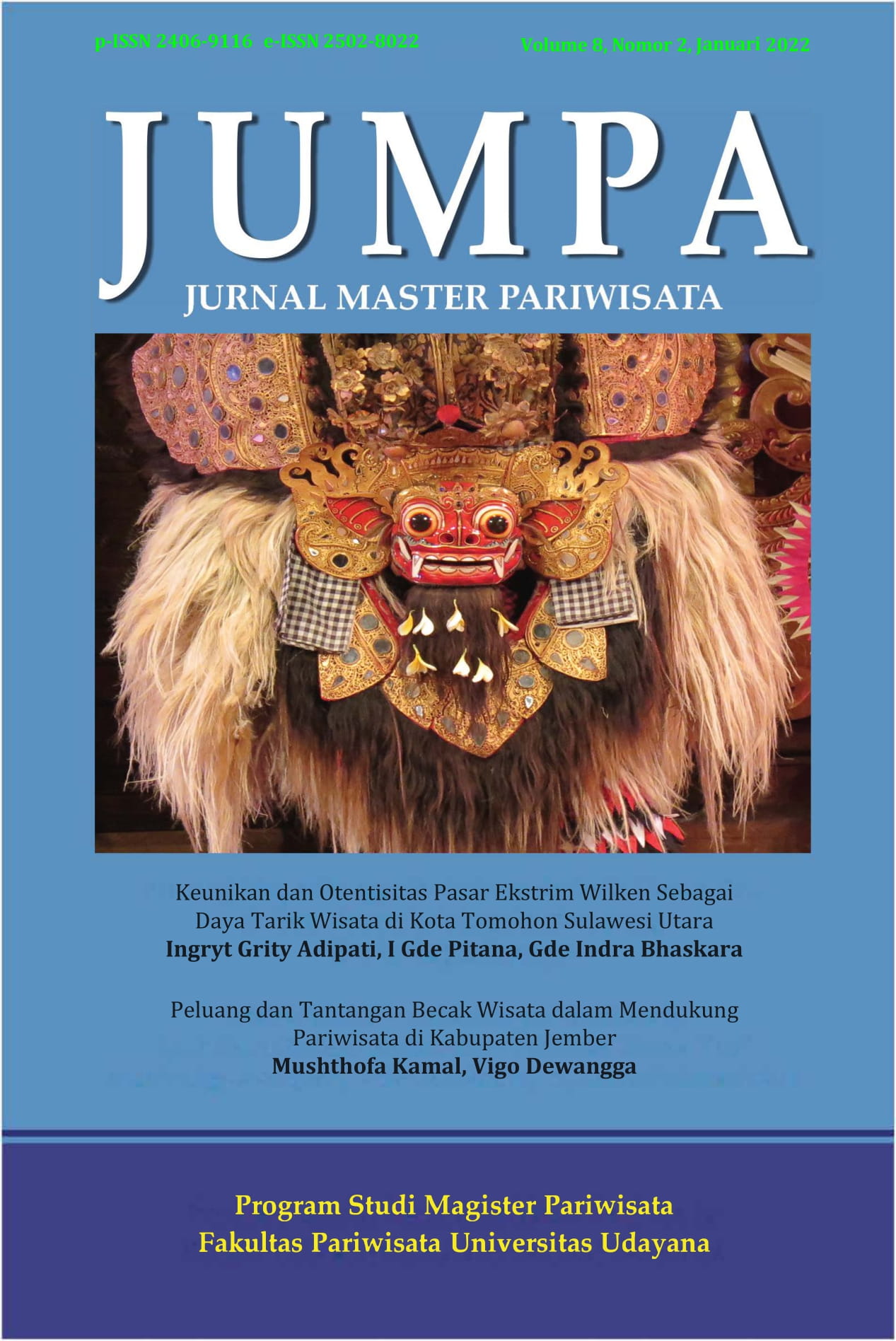Strategi Pengembangan Desa Wisata Catur, Kintamani-Bangli Pada Masa Pandemi Covid-19
Abstract
Bali is known as one of the best tourist destination islands in the world. Catur Village is one of the Balinese village which is designated as a Tourism Village by the Bangli Regency Government. Along with the government's efforts to promote tourism development, the Covid-19 Pandemic suddenly occurred. The tourism development program is not implementing as planned. This research will be carried out with a qualitative approach and SWOT-Interpretive analysis. The period before the Covid-19 pandemic was marked by the most visited natural attractions are citrus and coffee plantations, and also the acculturation of Balinese and Chinese cultures. The changing conditions of tourism activities during the Covid-19 pandemic in the Catur Tourism Village can be seen from the change in behavior in dealing with the New Normal Life. The life adaptation in the form of implementing the Health Protocol in a good and disciplined manner. The innovation and collaboration are conducted to produce herbal products. In the Pandemic of Covid-19, the Management Strategy in the Development of the Catur Tourism Village was carried out on the main platform "Innovation, Adaptation and Collaboration". Tourism segmentation in the future will be more to personalize, customize, localize, and smaller in size.
Keywords: Development Strategy, Tourism Village, Covid-19 Pandemic, Catur Village.














